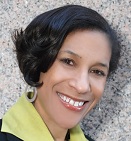by Pamela Arnold
President
American Institute for Managing Diversity, Inc.
I recently attended a corporate community event that was held to highlight volunteer opportunities that employees could participate in as part of the corporate social responsibility program for the company. The turnout was great and there was a high level of excitement in the air as employees learned more about what they could do to impact the community and effect change. The conversation from the employees across the different generations continues to validate that our workforce will never be the same – and, as diversity leaders preparing the workforce and the workspace, neither will we. Using the flexibility of the work environment, the tools of technology and the company’s commitment to social responsibility, the diverse employee population will drive the company and our society forward. As diversity leaders, we must continue to prepare and build the workspace for the recruitment, selection, and retention of workforce talent.
Introducing the “Alpha” Generation
Even as you are reading this, there are changes occurring that are impacting our work force, workplace, work environments and cultures. Our ability to embrace these changes will benefit all stakeholders. Let’s consider a few technological highlights of generations X, Y, Z and now the “iGeneration” or “Alpha” generation:
- Generation X: 29 – 42 yrs old (www. wikipedia.org)
- 70% use online shopping
- 65% use online banking
- 61% are mobile subscribers
- Generation Y: 18 – 28 yrs old (www.wikipedia.org)
- 90% own a computer
- 82% own a mobile telephone
- 72% send or receive SMS (text) telephone messages
- Generation Z: 17 – 27 yrs old (www.wikipedia.org)
- Also known as Digital Natives or Net Generation
- 18% of world population
- Life long usage of the World Wide Web, MP3, instant messaging, text messaging and mobile phones
- The Alpha Generation: Teens in 2010 (Lenhart, Ling & Campbell, 2010 Pew Research Center)
- 1st full generation born in the new millennium
- Four out of five carry a wireless device (17million)
- 1 billion text messages sent each day
- Primary communication tool to reach friends and family.
Diversity Partners in sustaining, maintaining, and retaining talent
Diversity leaders serve as partners to business leaders and employees at all levels of the organization to help navigate the changing generational demographics and how they impact the workspace. The five “w’s” and “h” – who, what, where, when, why and how – are questions that diversity partners provide guidance on every day. Generational diversity is not the only element that is impacting the workplace, but it is one of the more transformational dynamics we are seeing today.
At the American Institute for Managing Diversity we hear from organizations on what they are doing to make sure that their diversity framework includes technology as an enabler to support the workplace culture. Integrating technology with other diversity practices can move the company forward. Listed below are a few areas that contribute to a productive workforce, embrace technology as an enabler and build a successful work environment. Some of these have been around for years and others have recently been added as solutions to help facilitate a diverse and inclusive environment for all generations:
Social Media – Utilizing internal and external (inter- and intranet) sites for ongoing communication and updates is a must. This includes two-way interactions with all stakeholders in the company in different formats. Webinars, webcasts, podcasts and video-conferencing are used for online learning and corporate communications.
Employee Resource Groups – Leveraging the network groups for company support, ongoing learning opportunities and feedback on company initiative helps to build a connection to the business objectives. Helping organizations stay connected to the diverse voices and perspectives of the employees will yield positive results and creative innovations for supporting a successful workplace environment – which will in turn benefit the organization.
Learning and Knowledge Development (training) – Ongoing diversity learning for all levels of the organization is a core component for success. Utilizing various learning techniques will help to keep the workforce updated and aligned to the business goals and objectives.
Corporate Social Responsibility – Making a difference in the communities where we live, work and play is important to companies. Employers recognize that giving back is important for employees so they are creating more volunteer opportunities through the workplace. Skill based volunteer programs, designed for employees to use their work experience and skills to give back to communities through their jobs, are increasing at companies.
Strategic Diversity management – Managing diversity in the workplace is a skill that managers and leaders can utilize to build and maintain creative, innovative and successful organizations. The workspace has expanded across geographical lines and multiple time zones. In his latest book World Class Diversity Management: A Strategic Approach Dr. R. Roosevelt Thomas, Jr. states that “Globalization is transforming the very nature of our business relationships, decision-making processes, and interactions, making world class diversity management, more needed now than ever before.”
The iPhone, iPod and iPad are a few of the technological tools that are changing the working landscape. Diversity leaders will continue to evolve the workspace to proactively meet the requirements for building, sustaining and managing a diverse workforce. Generations X, Y, Z and the Alpha generations give us an opportunity to integrate technology into our diversity models, practices and principles. This integration leads to a workplace environment that encourages creativity and innovation and motivates people to make a difference not only internally but also externally in their communities.

Pamela W. Arnold
President
American Institute for Managing Diversity, Inc.
Pamela W. Arnold is President of the American Institute for Managing Diversity, Inc. The organization is a 501(c)(3) public interest nonprofit dedicated to advancing diversity thought leadership through research, education, and public outreach. AIMD works to strengthen our communities and institutions through effective diversity management. For more information, please visit www.aimd.org.






